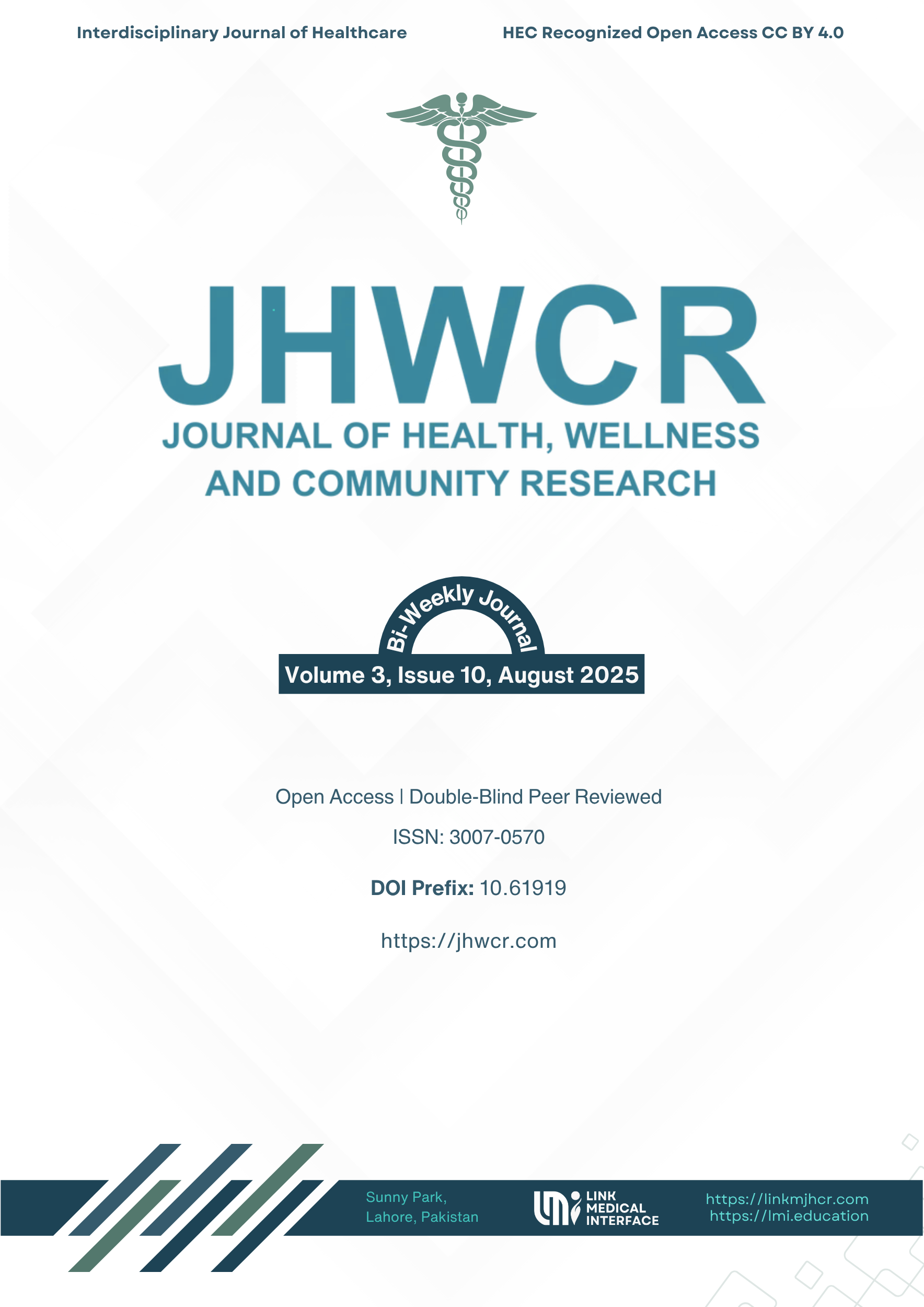Influence of Low Vision Assistive Technology on Mobility Among Visually Impaired Individuals
DOI:
https://doi.org/10.61919/wryykf60Keywords:
Low Vision, Assistive Technology, Mobility, Visual Impairment, Independence, Smart Cane, Screen Reader, Rehabilitation, LMICsAbstract
Background: Visual impairment affects nearly 295 million individuals worldwide, with low- and middle-income countries bearing the highest burden. Low Vision Assistive Technologies (LVAT) have been developed to enhance mobility and independence among those with residual vision, but real-world evidence from resource-constrained settings remains limited. Objective: This study aimed to evaluate the influence of LVAT on the mobility, independence, and confidence of visually impaired individuals in a Pakistani rehabilitation setting, and to identify the primary barriers and facilitators to their use. Methods: A descriptive study was conducted at Al-Ibrahim Eye Hospital Karachi. Sixty-five participants with low vision, using assistive devices for at least six months, were recruited through purposive convenience sampling. Data were collected via structured interviews, validated questionnaires including NEI-VFQ, and medical record reviews. Descriptive and inferential statistics were performed using SPSS. Results: Magnifiers (38.5%) and canes (33.8%) were the most used LVAT. Post-intervention outcomes showed 100% improvement in independent mobility and street-crossing confidence. However, 58.5% reported technical challenges. Key barriers included cost (43.1%) and lack of awareness (27.7%). Conclusion: LVAT significantly improve mobility and independence in visually impaired individuals, but adoption remains hindered by socioeconomic and infrastructural constraints. Targeted training, subsidies, and public awareness initiatives are essential.
Downloads
Published
Issue
Section
License
Copyright (c) 2025 Fatima Zahid, Devi Mohan Lal (Author)

This work is licensed under a Creative Commons Attribution 4.0 International License.


